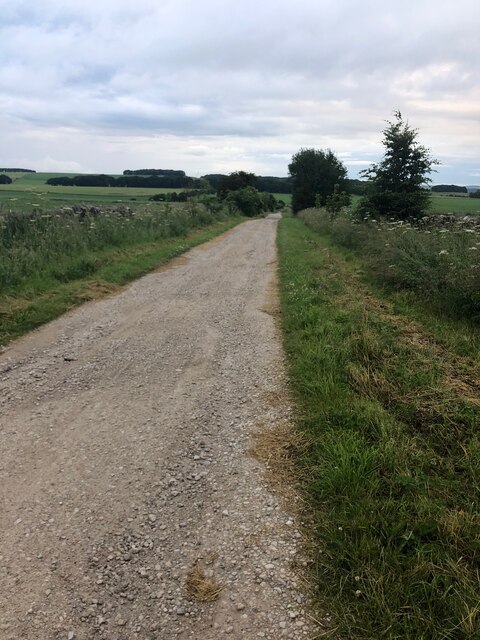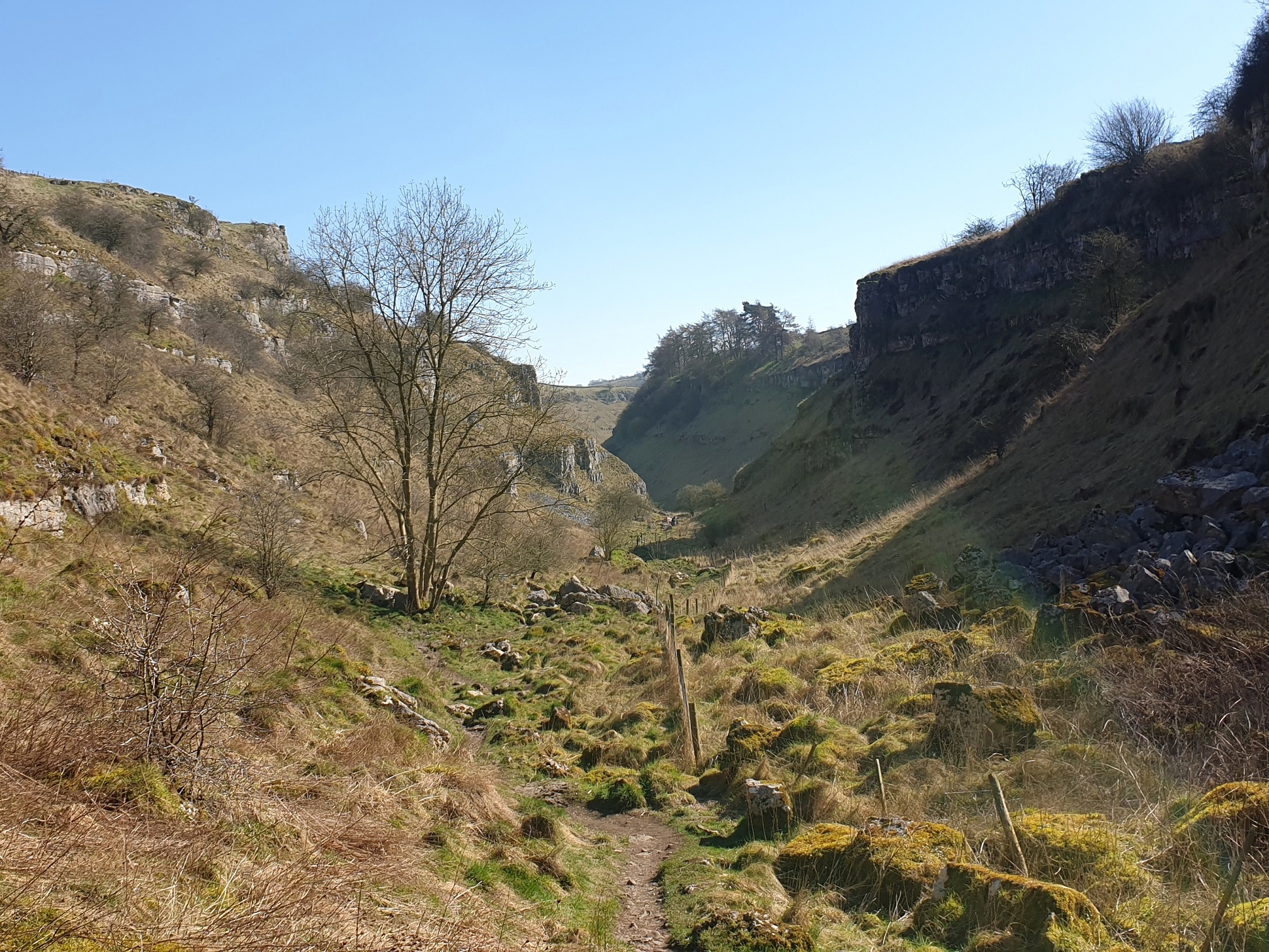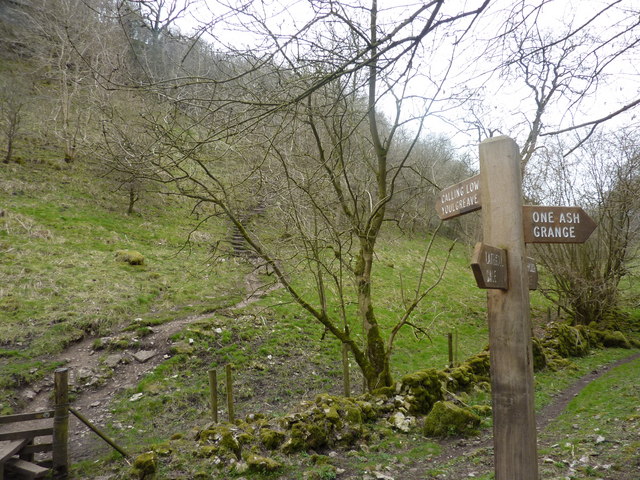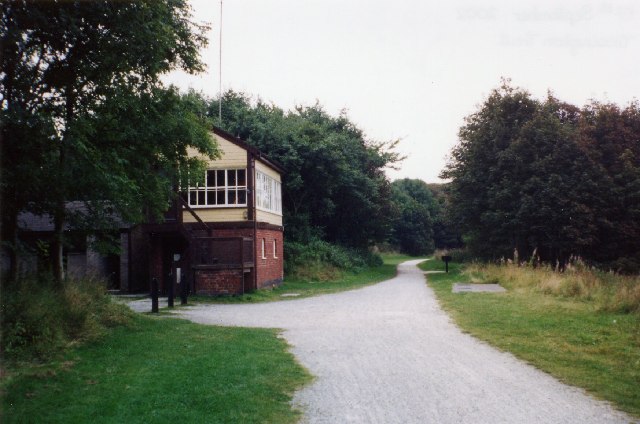Gib Hill
Hill, Mountain in Derbyshire Derbyshire Dales
England
Gib Hill

Gib Hill is a prominent hill located in the county of Derbyshire, England. Situated near the village of Cromford, it forms part of the picturesque landscape of the Peak District National Park. Rising to an elevation of approximately 300 meters (984 feet) above sea level, Gib Hill offers breathtaking panoramic views of the surrounding countryside.
The hill is primarily composed of gritstone, a type of sedimentary rock commonly found in the area. Its slopes are covered in lush grasses and scattered with heather, providing a habitat for a diverse range of flora and fauna. Wildflowers such as harebells and primroses can be spotted during the spring and summer months, adding to the hill's natural beauty.
Gib Hill is a popular destination for outdoor enthusiasts, particularly hikers and walkers. Several well-marked trails traverse the hill, offering visitors the opportunity to explore its rugged terrain and enjoy the stunning vistas. The hill's proximity to nearby Cromford allows for easy access, and its relatively moderate gradient makes it suitable for people of various fitness levels.
Aside from its natural attractions, Gib Hill also holds historical significance. It is believed to have been used as a defensive site during ancient times, with remnants of earthworks and ditches still visible today. These features provide insight into the hill's past and add an element of intrigue for those interested in archaeology and history.
Overall, Gib Hill is a captivating destination that combines natural beauty, recreational opportunities, and historical interest. Whether one seeks adventure, tranquility, or a glimpse into the past, this hill in Derbyshire offers a memorable experience for all who visit.
If you have any feedback on the listing, please let us know in the comments section below.
Gib Hill Images
Images are sourced within 2km of 53.167975/-1.766906 or Grid Reference SK1563. Thanks to Geograph Open Source API. All images are credited.






Gib Hill is located at Grid Ref: SK1563 (Lat: 53.167975, Lng: -1.766906)
Administrative County: Derbyshire
District: Derbyshire Dales
Police Authority: Derbyshire
What 3 Words
///upstarts.drumbeat.hobbyists. Near Newhaven, Derbyshire
Nearby Locations
Related Wikis
Gib Hill
Gib Hill is a large burial mound in the Peak District, Derbyshire, England. It is thought to be a Neolithic oval barrow with an Early Bronze Age round...
Arbor Low
Arbor Low is a well-preserved Neolithic henge in the Derbyshire Peak District, England. It lies on a Carboniferous Limestone plateau known as the White...
Newhaven Tunnel
Newhaven Tunnel was a railway tunnel located on the Cromford and High Peak Railway near the village of Newhaven in Derbyshire. Mostly used for moving mineral...
Parsley Hay railway station
Parsley Hay railway station served Parsley Hay, a hamlet within Hartington Middle Quarter civil parish, about 9.3 miles (15 km) south east of Buxton, Derbyshire...
Lathkill Dale
Lathkill Dale is the valley of the River Lathkill near Bakewell, Derbyshire in the Peak District of England. The river emerges into the dale from springs...
Cales Dale
Cales Dale is a short valley towards the head of Lathkill Dale near Monyash, Derbyshire in the Peak District of England. Cales Dale is included within...
Hartington railway station
Hartington railway station opened in 1899 about two miles away from the village it served - Hartington (grid reference SK129604) in Derbyshire, south...
Limey Way
The Limey Way is a 65-kilometre (40 mi) challenge walk through Derbyshire, England. It starts at Castleton and progresses through 15 major and 5 minor...
Nearby Amenities
Located within 500m of 53.167975,-1.766906Have you been to Gib Hill?
Leave your review of Gib Hill below (or comments, questions and feedback).


















